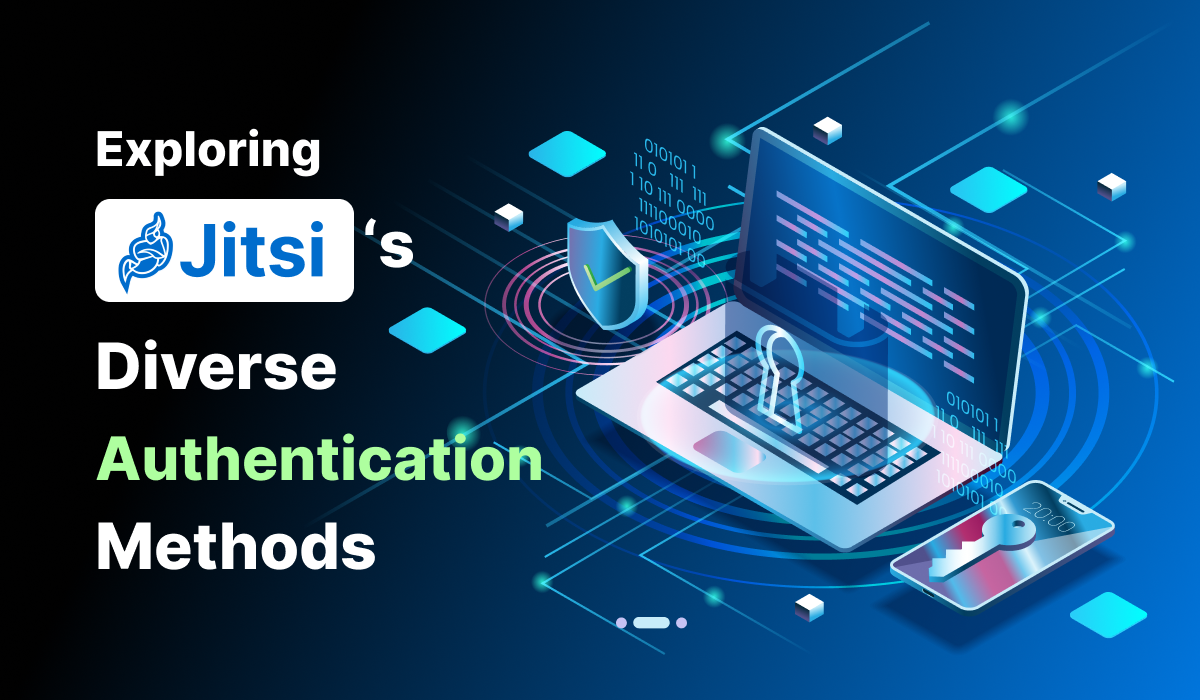Exploring Jitsi's Diverse Authentication Methods

Jitsi shines as a standout platform in the field of secure and seamless virtual communication, providing a variety of authentication techniques to meet different needs. Jitsi's authentication mechanisms are crucial in determining its dependability and user-friendliness, from securing access to guaranteeing a seamless user experience. In this blog, we focus on four crucial methods for authentication that sum up Jitsi's commitment to convenience and security.
1. Secure Domain Authentication
The first type of protection in Jitsi's authentication mechanism is the Secure Domain Authentication. This technique limits usage to authorized organizations or people by limiting access to specific domains. Jitsi strengthens security and reduces the risks associated with unauthorized access by enforcing this safeguard to make sure that only users with the necessary credentials can participate in virtual conferences.
2. JWT (JSON Web Token) Authentication
Jitsi integrates JWT Authentication to increase platform reliability. JSON Web Tokens are cryptographic tokens that strengthen the verification process by authenticating user identities. Jitsi's dedication to establishing a secure communication environment is highlighted by the use of JWT Authentication, which confirms the legitimacy of participants.
3. LDAP (Lightweight Directory Access Protocol) Authentication
Through LDAP Authentication, Jitsi seamlessly integrates with existing directory services. This technique, which frequently makes use of Active Directory systems, verifies user identities against recognized databases, lowering friction and facilitating effective authentication. Jitsi demonstrates its adaptability to various organizational structures by utilizing LDAP to ensure a secure and hassle-free user experience.
4. Single Sign-On (SSO) Authentication
Single Sign-On (SSO) Authentication, which is frequently made possible by third-party integrations, is a crucial component of Jitsi's authentication landscape. This strategy enhances the user experience by seamlessly integrating with current authentication systems. Users can access Jitsi through SSO using the established credentials from the system within their organization. Jitsi improves user convenience while upholding strict security measures by avoiding the need for repetitive login procedures.
In conclusion, Jitsi's authentication methods emphasize its commitment to providing a secure, efficient, and user-centric conferencing platform. Participants can participate in virtual discussions with confidence thanks to the integration of these techniques because they are aware a strong authentication framework is protecting their communications.
